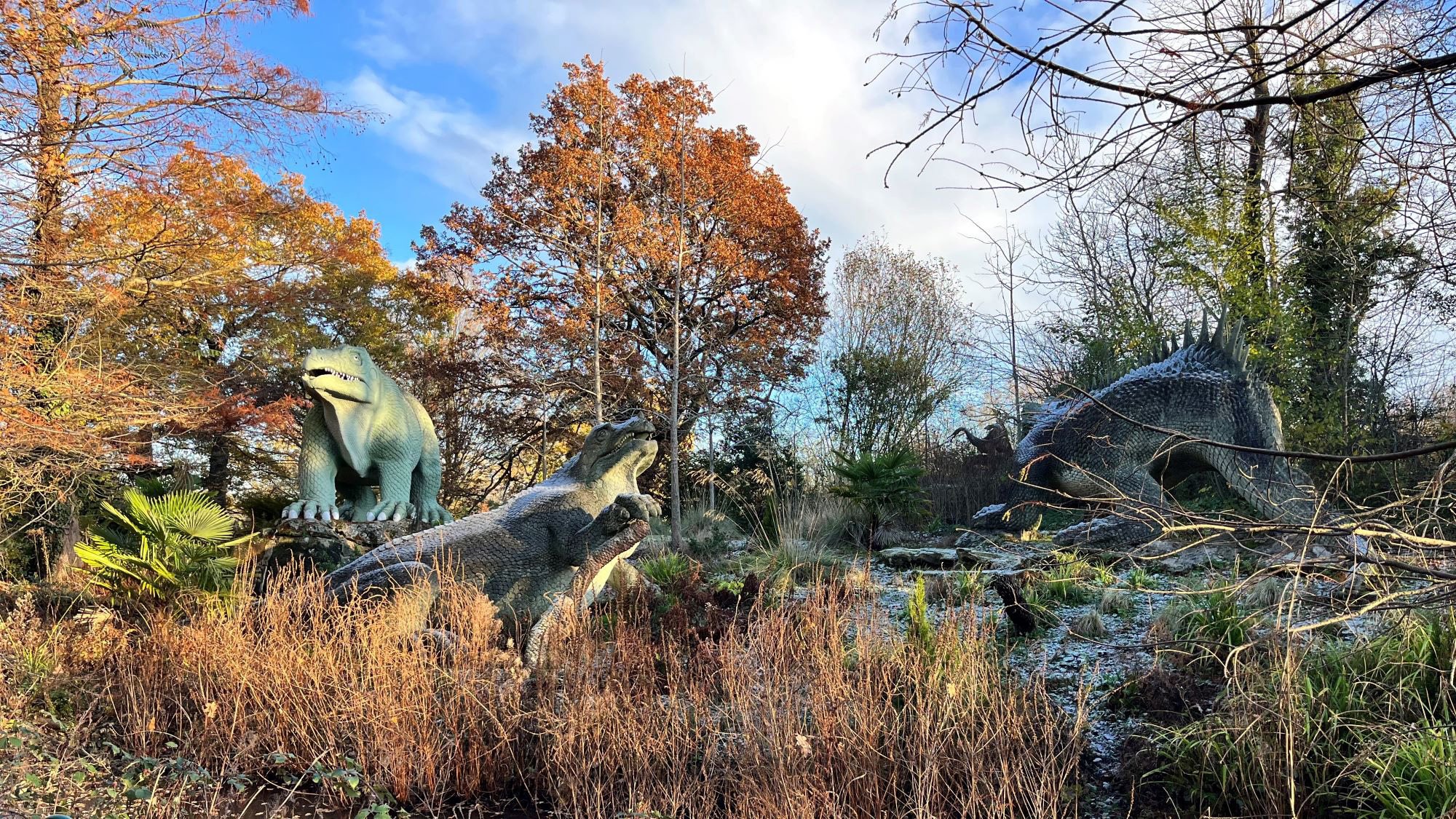Find out more about the work of the Friends of Crystal Palace Dinosaurs and watch two short films on conservation of the sculptures.
Saving the World-Famous Crystal Palace Dinosaurs
Historic England, Bromley Council, the Friends of Crystal Palace Dinosaurs and the Crystal Palace Park Trust are working in partnership to understand why the internationally important Crystal Palace Dinosaurs are deteriorating.
New scanning, material analysis and archival research is currently underway to inform a holistic repair strategy for the prehistoric animal sculptures and surrounding geological landscape, as well as a plan for their long-term management.
We want to ensure the survival of these much-loved beasts so that they can intrigue and delight generations to come.
The Victorian Dinosaurs were added to the Heritage at Risk register in February 2020, with important repairs carried out in recent years, including to the Megalosaurus in 2021.
Despite such interventions over their 170-year history, the dinosaurs are showing their age and are continuing to weaken year-on-year.
They are exposed to the elements and therefore subjected to extremes of weather, from the recent snow to this summer’s drought (where the ‘Dinosaur Lake’ dried up to leave the marine animals high and dry, exposing further cracking to their foundations). New photography reveals the impact changes in climate are having on the sculptures.
Soon, with volunteer help, Historic England and partners will be starting a detailed survey to record and put into safe-keeping any pieces of the sculptures that remain loose on the site, to better understand and aid their restoration.
Your photos of Crystal Palace Dinosaurs
The Dinosaurs have a dedicated global following and have attracted famous fans as varied as Sir David Attenborough and Guns N' Roses guitarist Slash. We’re now calling on all past visitors to the Dinosaurs for your help.
Do you have family photos of the Crystal Palace Dinosaurs taken before 2017? By gathering your snapshots of the Dinosaurs in years gone by, we can build up a picture of their health through time and inform their conservation going forward. We are asking the public to share any photos that feature the sculptures with the Friends of Crystal Palace Dinosaurs as part of the Dinosaur Monitor Project. Photos from even a decade ago are proving useful in piecing together the Dinosaurs’ history.
Submit your photos with information on when they were taken, via Twitter or Instagram using the hashtag #DinosaurMonitor, or by email to [email protected]
Crowdsourced archival photographs can help us fill gaps in our knowledge about the sculptures throughout their history. Previous submissions have helped highlight areas of damage, levels of flooding and change in vegetation across the site. This information helps us create the best conservation plans for the structures.
How about something older?
Balloon flights were a regular feature at the Park from the 1860s onwards.
These were mostly short, tethered flights but a number of ‘free’ flights also started within the grounds. Most Victorian and Edwardian ballooning did not involve hot air balloons as we know them with onboard burners. Instead, balloons were usually gigantic bags of gas.
Cecil Shadbolt took the earliest known aerial photograph of the Crystal Palace in the 1880s. The Shadbolt Collection is now housed in the Historic England Archive after it was unearthed at a car boot sale in 2015.
The Rev John Bacon first flew from the Crystal Palace grounds in 1888 and made numerous flights over the next 15 years, often with a camera in hand. Few of his photos seem to have survived. Some are reproduced in contemporary books and magazines, but there must have been others.
Do you have any early aerial photography of the Park hidden in an attic or know more about these early balloonists?
History
Crystal Palace Park, a Grade II* Registered Park and Garden, was first laid out in the 1850s to designs by Joseph Paxton. The “Tidal Lakes” area in the south of the park includes thirty sculptures of prehistoric animals, covering a huge span of geological time, together with geological features, lakes and islands. The Dinosaurs were created by Benjamin Waterhouse Hawkins as part of the original 1850s design of the park, notably before the publication of Darwin’s Origin of Species.
Listed at Grade I, the Dinosaurs and their surroundings are of international importance and are one of the earliest examples of “edu-tainment”. They represented the cutting edge of the Victorian understanding of the prehistoric world and are displayed in chronological order within reconstructions of their appropriate geological settings.
In 2023, Crystal Palace Park will be transferred to Crystal Palace Park Trust. The Trust will acquire a long-term lease to the Park from Bromley Council and will assume responsibility for its management and maintenance.





